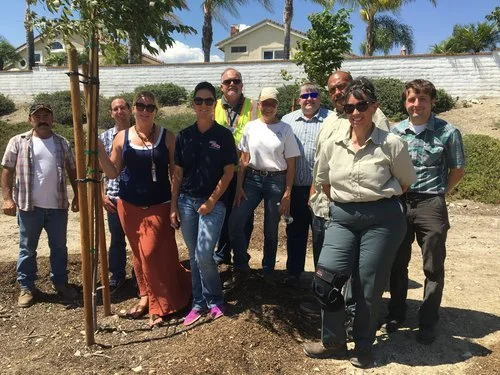California Department of Forestry and Fire Protection
In August of 2024, the Canyon Fire ignited in the Tuolumne River Canyon, quickly becoming a threat to nearby subdivisions. Fortunately, the Tuolumne Fire Safe Council had received California Climate Investments funding through the Wildfire Prevention Grants program and completed the Ponderosa-Mira Monte Shaded Fuel Break just two years prior. The fuel break gave wildland firefighters leverage in slowing and ultimately extinguishing the blaze, saving area homes and lives.






















